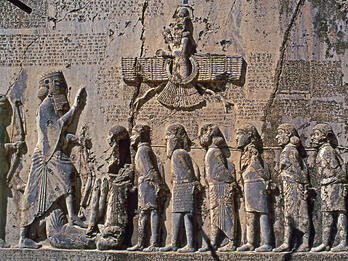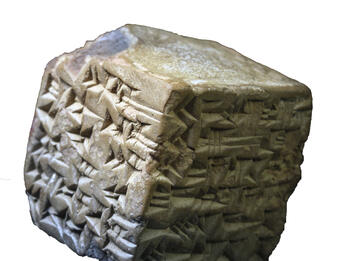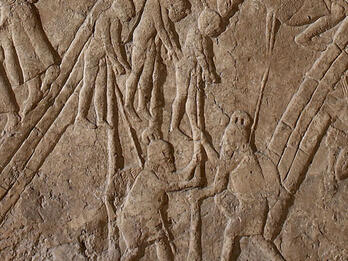Ruth
Ruth 1–4
Persian Period, Late 6th–4th Century BCE
Chapter 1
1In the days when the chieftainsa ruled, there was a famine in the land; and a man of Bethlehem in Judah, with his wife and two sons, went to reside in the country of Moab. 2The man’s name was Elimelech, his wife’s name was Naomi, and his two sons were named Mahlon and Chilion—Ephrathites of Bethlehem in Judah. They came to the country…
Related Guide
Biblical Narrative Style
Biblical narrative presents a long and often continuous account of Israel’s story that differs significantly from modern narrative style.
Related Guide
Overview of the Biblical Story from Creation to the Exile
The first eleven and the last four books of the Hebrew Bible present an account of Israelite history from the origins of the world through the Babylonian exile.
The book of Ruth is in the Ketuvim (Writings) section in Jewish Bibles. It is one of the five megillot (scrolls) read publicly on specific occasions; Ruth is read on the festival of Shavuot. In Christian Bibles, which do not group the megillot together, Ruth is placed between the books of Judges and Samuel because it is set in the period of Judges and culminates with the genealogy of David. The pastoral picture it offers shows a side of life at the time of the Judges that is altogether different from the constant battles portrayed in the book of Judges; Moab, usually an enemy of Israel, is, in Ruth, a peaceful neighbor. The events in the book and its main characters, Ruth and Naomi, are un-known to the narratives from Genesis through Kings, and Boaz is mentioned just once, in the genealogy in 1 Chronicles 2:11–12 (Chronicles seems to have drawn on the genealogy at the end of Ruth). The book’s anomalous application of biblical laws—combining levirate marriage with the redemption of land—is implausible. Scholars date the book to the Second Temple period, and indeed several of its themes must have resonated in postexilic times. One theme is the return to Judah after a long sojourn in a foreign land. Naomi, alone in Moab after the death of her husband and sons, returns to her hometown, Bethlehem, in Judah, when the famine that caused her family’s emigration is over. Her Moabite daughter-in-law, Ruth, comes with her and is welcomed into Naomi’s community. Ruth had already accepted Naomi’s people and God as her own, al-though there was no formal ceremony of conversion at that time. Ruth seems to exemplify, in a most positive way, those non-Jews who attached themselves to the Jewish community, a phenomenon of the Persian and later periods. Also exemplified in the story is the hesed, or devotion and caring, between Ruth and Naomi. That Ruth is the ancestor of King David evokes another theme of the period during the return to Judah after the exile, namely, the hope for restoration of the Davidic monarchy.
You may also like

Harvesting and Threshing in Egyptian Painting, from the Tomb of Pa-heri (New Kingdom)

Esther

Behistun Trilingual Inscription and Aramaic Papyrus

Lot (puru), Assyria



